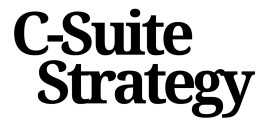
Understanding the Four Disciplines
Decoding the Core Concepts
The foundation of strategic execution lies in understanding the four disciplines that form its backbone. These disciplines allow organizations to focus on what truly matters while maintaining accountability and purpose. The essence of effective execution is simplifying chaos; conjuring a focus that becomes as narrow as possible to drive substantial results. At its heart, this approach encourages a culture of discipline within the team. It revolves around clearly defining and pursuing wildly important goals (WIGs). The process mandates a narrowing of focus, which requires identifying top priorities that will drive significant change in an organization. This focus helps communities, corporations, or students alike in harnessing their energy towards achieving specific, impactful goals. Incorporating the four disciplines into your business strategy is a form of art. It’s not merely about having a goal, but about how disciplined goals are executed effectively. As clarity of purpose achieves prominence, teams become adept at filtering out unimportant tasks - often referred to as the whirlwind of daily activities. It is about distinguishing between what is urgent and what is exceedingly important for the business’s growth trajectory. These disciplines also emphasize leveraging lead measures as opposed to lag measures, to ensure proactive changes. Lead measures track activities that directly affect the goals, focusing team efforts on controllable aspects of their workplace endeavors. This requires filling forms and setting commitments that can be executed within the given time frame. The process is ongoing, involving the formation of a compelling scoreboard and the establishment of a regular cadence of accountability to keep commitments consistent. To enhance your mastery of strategic execution, explore more about improving business performance through strategic improvement techniques.Focusing on Wildly Important Goals
Set Priorities with Unwavering Determination
Navigating through the whirlwind of daily activities often leads teams to lose sight of what truly matters. Focusing on wildly important goals is about concentrating on the few priorities that make all the difference. By honing in on these goals, teams can channel their energy into activities that have a substantial impact on the company’s success.
To elevate accountability and empower team members, it’s essential to establish clear goals that stir passion and drive. This brings a sense of purpose and clarity to the team, shifting their mindset from mindless tasks to targeted actions with meaningful outcomes.
Drive Commitment Through Precision
In a session focused on enhancing business performance, it becomes evident that leveraging leadership is crucial. A firm commitment to achieving the set goals requires a disciplined focus, with each session dedicated to refining priorities. Teams are encouraged to track progress meticulously and adapt if necessary, reinforcing their strategies with intent and deliberation.
The rhythm of these activities establishes a cadence of accountability, ensuring that teams remain aligned and disciplined. By revisiting commitments from previous sessions, individuals and teams can adjust their focus, eliminate distractions, and maintain momentum.
Establish Clear Objectives
When objectives are clear and communicated effectively, the commitment to those goals intensifies. It’s about narrowing the focus and eliminating distractions. This tactical approach fosters a culture where team members can align their energies towards achieving specific, measurable outcomes that align with the organization’s broader mission.
Ultimately, the strength of these disciplines lies in their execution, providing a structured framework that transforms ordinary teams into high-performing ones. By keeping the focus narrow and measurable, ensuring clarity and commitment, organizations position themselves for success in a competitive landscape.
Leveraging Lead Measures
Tracking the Ripple Effect of Actionable Insights
To effectively execute strategic plans, focusing solely on end results is often not enough. This is where the influence of lead measures becomes paramount. Instead of worrying about lagging indicators, which provide an after-the-fact snapshot, it's beneficial to focus on actionable insights and activities that propel your team toward achieving its goals. In this discipline, the focus shifts to predictions—what can be done today to influence outcomes in a desirable direction? Lead measures are specific actions that team members make commitments to undertake within a given time frame. These commitments help sharpen the discipline focus and keep everyone aligned with the overarching objectives. The key lies in identification and adoption—figuring out which activities will truly drive performance. This often requires a narrowing focus, forcing teams to concentrate on the most impactful strategies instead of scattering their efforts across numerous initiatives. During regularly scheduled team sessions, it's essential to review these commitments from the previous session. Team will analyze what works, what needs adjustment, and what additional steps are necessary. This allows for flexibility and adaptation within the whirlwind of day-to-day work, ensuring the team can course-correct and refine their focus based on real-time feedback. When team members visibly track these lead measures on a compelling scoreboard, it fosters accountability and encourages a rigorous follow-through. Keeping a compelling scoreboard in the public eye offers a constant reminder of goals that need attention, serving as a motivator for both leadership and students of the initiative. The journeys through mastering the four disciplines of execution need not be solo ventures. By integrating these principles, as elaborated in the navigating the strategic landscape for CEOs, organizations can achieve a delicate balance between executing wildly important goals and maintaining a robust cadence of accountability.Creating a Compelling Scoreboard
Crafting an Engaging Scoreboard
Creating a compelling scoreboard is an essential aspect of mastering strategic execution. It acts as a visual representation of the team's progress towards its wildly important goals (WIGs). For teams prioritizing focus, a scoreboard provides clarity by narrowing focus on the most critical metrics. It's not just about displaying numbers; it’s about telling a story of where the team stands in their strategic journey. The discipline of execution suggests that a compelling scoreboard should be highly visible to the team members and simple enough for everyone to grasp at a quick glance. It should track key lead measures that influence the WIGs. When designed effectively, the scoreboard keeps the team engaged and motivated by showing real-time progress and areas needing attention. Several attributes make a scoreboard truly compelling:- Visibility: It should be accessible to all team members, serving as a constant reminder of commitments and progress.
- Clarity: Use simple, clear indicators that convey the status of lead measures and goals. Vague or overly complex scoreboards lose the attention of the team.
- Relevance: Display data that accurately reflects the current stage of goal achievement, focusing on lead measures that are within the team's control.
- Engagement: Regularly update and present the scoreboard during execution sessions to maintain a rhythmic cadence of accountability.
Establishing a Cadence of Accountability
Establishing a Steady Rhythm for Accountability
To achieve meaningful progress, it's crucial to integrate a consistent mechanism for accountability within your team's routine. This can be effectively accomplished by creating a cadence of accountability through regular, disciplined sessions. Within this framework, team members have the opportunity to engage in open dialogue, assess their commitments, and take charge of their execution journey.
A well-structured cadence enables teams to maintain a narrow focus on their wildly important goals (WIGs) and reinforce the use of lead measures. These gatherings, often referred to as WIG sessions, are not just about tracking progress; they are about fostering a culture of transparency and responsibility. Here, team members are encouraged to present their achievements, identify obstacles, and contribute to the collective effort of moving the needle on crucial goals.
- Accountability Sessions: Designate specific times for your team to convene, ensuring these are adhered to with unwavering consistency.
- Commitment Reflection: During these sessions, each member reviews commitments made in the previous session, discussing any challenges faced.
- Continuous Improvement: Encourage a mindset focused on iterative growth, using each session to build on the last.
To make these sessions as effective as possible, it's vital to keep them concise and purpose-driven. This prevents them from getting caught in the whirlwind of daily activities. Your leadership team should model this discipline, demonstrating how a commitment to regular accountability not only drives execution but also solidifies the disciplines within the company's culture.
Regular accountability sessions allow for real-time feedback, ensuring team members can swiftly adjust their approaches. By remaining focused on lead measures, your team can keep a finger on the pulse of what moves the dial towards achieving WIGs. The act of frequent tracking and documenting—whether through a scoreboard or digital tools—encourages ongoing motivation and clarity.
Integrating the Disciplines into Company Culture
Embedding the Disciplines into Everyday Work
Integrating the four disciplines into the fabric of your company culture is not just a task, but a transformative journey. It's about making these practices part of the everyday work that your team members engage in, ensuring that execution becomes second nature.
Creating a Culture of Discipline
To truly embed these disciplines, leadership must set the tone by consistently demonstrating a focus on wildly important goals (WIGs). This requires a narrow focus, where team members understand that their efforts are directed toward achieving these goals. It’s crucial that leaders encourage a culture where discipline in execution is celebrated and recognized.
Encouraging Accountability and Commitment
A cadence of accountability is vital. Regular sessions should be held to track progress on lead measures and commitments. During these sessions, team members can discuss their progress, address challenges, and adjust strategies as needed. This ongoing dialogue reinforces accountability and helps maintain momentum.
Utilizing Scoreboards to Track Progress
Creating a compelling scoreboard that is visible and easily understood by all team members is key. It serves as a constant reminder of the goals and the progress being made. This transparency keeps everyone aligned and motivated to push forward.
Aligning Activities with Goals
Ensure that daily activities align with the overarching goals. This alignment requires that every team member understands how their work contributes to the larger objectives. By keeping the whirlwind of daily tasks in check, teams can maintain focus on their wildly important goals.
Continuous Learning and Adaptation
Finally, fostering a culture of continuous learning and adaptation is essential. Encourage team members to reflect on what works and what doesn’t, and to be open to change. This adaptability will ensure that the disciplines remain relevant and effective over time.














